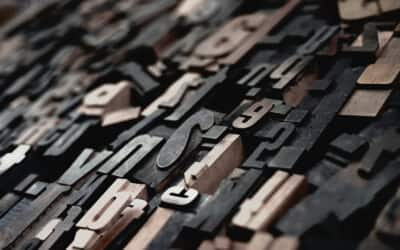How the printing industry leverages design software to maximize efficiency and reduce waste: exclusive report
Print service providers play a crucial role in turning designs into tangible assets. Whether you’re looking to promote an event, launch a new product, or take your brand on the road, it all beings with design. And that design lives in a design file, ready to be brought to life, built upon, and transformed into different iterations and outputs.
But who’s behind the magic? The print service industry is made up of the people who help bring your design visions to life by using top-notch graphic design software to create stunning visuals that will leave a lasting impression.
We did some digging and partnered with NAPCO Research to gain a deeper insight into how print service providers utilize their graphic design software and how they view its benefits. To do this, we conducted a survey of print professionals. Our survey sheds light on how these professionals use their design skills and software to elevate businesses and brands to the next level.
Research methodology and focus
In partnership with NAPCO Research, CorelDRAW Graphics Suite conducted an online survey of print service providers in February 2023. The survey was sent to printers spanning commercial print, wide-format graphics, and apparel decoration. In total, exactly 200 printers completed the survey.
We examined the integral role graphic design software delivers to the print industry and how small investments in keeping design software current can help increase efficiencies in the pressroom, reduce waste, enhance color management, and more! All the while resulting in cost savings and improved customer service for print service providers.
The survey respondents represent a wide variety of print segments spanning traditional commercial applications such as:
- Documents, forms, and publications
- Wide-format applications on both rigid and flexible substrates
- Custom printed apparel
- Labels and packaging
- Wall coverings
- Vehicle wraps
Key findings
Despite the diversity of survey respondents, the results revealed many commonalities in how printers are currently leveraging their graphic design software. In summary, the survey found that graphic design software:
- Increased efficiency –Print businesses who update their graphic design software are 45% more likely to experience higher efficiency.
- Reduced waste due to improved graphic reproduction accuracy – 63% of respondents stated that graphic design software helped them avoid reruns due to improved graphic reproduction accuracy.
- Improved color management – 59% found that graphic design software improved their color management capabilities.
- Enhanced preparation of graphic design files for print – 41% of print companies surveyed indicated there’s room to improve the efficiency of preparing graphic design files for print.
Below are some of our report’s main findings in greater detail:
Increased efficiency
Our report showed that perhaps one of the most impactful steps that commercial printers can take towards maximizing efficiency and reducing waste is upgrading their graphic design software immediately.
Respondents who did so were 45% more likely to report that they are highly efficient in the prepress stages, as opposed to respondents who delayed upgrading or chose to stick with outdated software. This highlights how keeping your design software up to date can significantly improve the efficiency and quality of the prepress stages, which ultimately leads to better products and customer satisfaction.
Reduced waste with improved graphic reproduction accuracy
We dug deep into the print industry to uncover ways to reduce waste and improve accuracy in print production, and the results were eye-opening. When surveying the industry about their waste reduction strategies, we discovered that there is clear room for improvement.
The top response from respondents asked to outline their strategies in waste reduction clarifies that printers are looking internally first. In fact, more than half of respondents stated that they have pushed staff training to improve accuracy, but as indicated in the responses to our questions about overall accuracy, it is evident that further technological solutions are necessary to improve the waste situation in the commercial printing realm.
Our data indicates that design software is an ideal tool for waste reduction. When presented with several waste reduction attributes, most respondents indicated that their graphic design software has helped them achieve these advantages. In fact, 63% of respondents stated that graphic design software helped them avoid reruns due to improved graphic reproduction accuracy.
Improved color management
Lack of confidence in color management is a letdown for designers, leading to pesky customer revisions and reworks that eat up their precious time. And to make matters worse, our report showed that only about half of companies are nailing it when it comes to meeting customer expectations with minimal revisions or rework.
As shown in the report, only about half (54%) of respondents stated their companies provide excellent performance in meeting customer expectations with minimal revisions or rework.
Similarly, nailing a print job on the first production run is key to success for both printers and their customers. On the print side, meeting expectations on the first try ensures that the presses are not tied up with a single job for an extended period. For customers, it means that their print campaigns will not be delayed.
When asked specifically if they consistently meet customer expectations on the first attempt, a little over half (61%) of respondents stated they strongly agree. This number suggests there is much room for improvement, which our study showed could be refined using design software.
While 59% of participants found that graphic design software improved their color management capabilities, only 31% strongly agree that their company implements and follows through on effective color management strategies.
Enhanced preparing graphic design files for print
In our survey, we asked printers how they rated their designs to output performance and the results told a clear story; more than half of respondents state their companies offer excellent performance in efficiently preparing graphic design files for print or output (59%) and meeting customer expectations with minimal revisions/rework (54%), there is clear room for improvement.
The participants who said their companies offer excellent performance in efficiently preparing design files can be tied directly to their use of graphic design software. As such, 83% of respondents stated that using design software increased efficiency in prepress.
Overview of report findings
Graphic design software touches just about every aspect of print production, and printers, agencies, brand owners, and marketers should be cognizant of the solutions they use and the advantages they bring to the process.
In an environment that stresses efficiency, productivity, and accuracy, the latest advancements in graphic design software offer cost-effective methods of maximizing speed of production and ensuring customer expectations are met on the first try.
Based on the data gathered by this survey, commercial printers can engage in the following tactics and activities to maximize efficiency and reduce waste in 2023 (and beyond):
- Upgrading their graphic design software
- Minimizing printing reruns by streamlining the prepress process
- Improving printing accuracy with better staff training and software solutions
- Enhancing color management and therefore print outputs
- Increasing use of design-focused cloud collaboration technologies to streamline communication processes, particularly shortening internal and external stakeholder review timeframes.
CorelDRAW Graphics Suite has low subscription costs and offers updates. By updating their organization’s software on a regular basis, designers and commercial printers can ensure they are achieving the latest advantages in efficiency, waste reduction, and color management, without having to go through the costly and time-consuming process of vetting, purchasing, installing, and training staff on new capital equipment.
Interested in reading our full report? Check it out here!








0 Comments